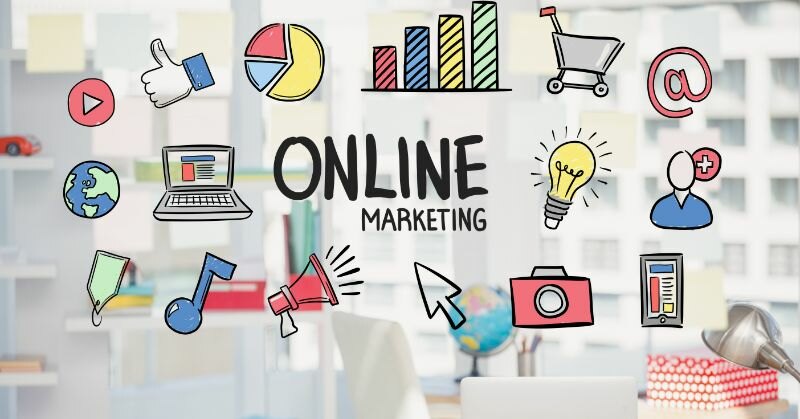Email marketing might sound old-school, but it's still one of the easiest and most powerful ways to get people to notice—and buy—your products. It's cheap, targeted, and actually works when done right.

1. The Fundamentals of Email Marketing
Definition and Purpose
Email marketing is the practice of sending promotional messages, updates, or content to an audience via email. Its primary goal in product promotion is to build relationships, drive engagement, and ultimately convert recipients into paying customers.
Key Components
-
Mailing Lists: Organized collections of opt‑in subscribers segmented based on interest, behavior, or demographics.
-
Content: Tailored emails—ranging from product announcements to educational newsletters—crafted to appeal to specific segments.
-
Automation: Systems that send emails automatically in response to triggers, like user signup or product abandonment.
-
Analytics: Data tools monitoring open rates, click-through rates, conversion rates, and more to optimize campaigns over time.
Compliance and Opt-In Strategies
Compliance with regulations such as GDPR and CAN-SPAM is mandatory. Clear opt‑in procedures, easy unsubscribing, and transparent use of data help build trust, protect against fines, and ensure higher engagement rates.
2. Why Email Marketing Works for Product Promotion
Personalization and Direct Communication
With email, brands can tailor messages to individual preferences—addressing recipients by name, recommending relevant products, and acknowledging past purchases—to create meaningful connection and relevance.
High ROI
Email marketing consistently delivers among the highest returns in digital marketing. According to industry averages, every $1 spent yields $36 in ROI, far surpassing social media or paid search campaigns.
Segmentation Capabilities
By segmenting email lists—based on demographics, purchase behavior, or engagement—marketers can send highly relevant product promotions to the right audience, increasing open rates and conversions.
Email Marketing vs. Other Digital Channels
| Channel | Avg Cost Per Acquisition | Avg Conversion Rate | Avg ROI (per $1) |
|---|---|---|---|
| $10–$20 | 4–20% | $36 | |
| Social Media (Organic) | $15–$30 | 1–5% | $20 |
| PPC (Google/Facebook) | $30–$100 | 2–10% | $25 |
| Content Marketing | $20–$50 | 1–3% | $30 |
Data compiled from industry case studies and marketing benchmarks.
3. Building a High-Quality Email List
Ethical Collection Methods
-
Website Sign-Up Forms: Embedded on homepages, blogs, or product pages.
-
Popup Offers: Exit-intent popups offering a discount or resource in exchange for an email.
-
In-Store or Event Signup: For brick-and-mortar stores or live events, collecting emails in person garners local interest and loyalty.
Incentives That Work
-
Lead Magnets: E-books, checklists, or webinars aligned with product themes.
-
Discounts and Free Samples: Immediate rewards for brand interaction.
-
Exclusive Content or Early Access: Creating a sense of privilege among subscribers.
Tools for List Management
-
Mailchimp: User-friendly, scalable platform.
-
Klaviyo: Known for e‑commerce integrations and advanced segmentation.
-
Constant Contact: Ideal for small businesses with powerful templates and automation.
These platforms cover sign-up tools, subscriber segmentation, and compliance tracking.
4. Crafting Effective Promotional Emails
Attention-Grabbing Subject Lines
-
Use urgency: "24‑Hour Flash Sale!"
-
Invoke curiosity: "Guess What We Launched?"
-
Add personalization: "Jane, this deal is for you."
Mobile-Responsive Design
With over 60% of emails opened on mobile, use single-column layouts, legible fonts (14px+), clear CTAs, and optimized images for fast load times.
Persuasive Copywriting
-
Opening Line: Capture attention with benefits or relatable pain points.
-
Body: Focus on how the product solves problems or improves lives.
-
Social Proof: Include reviews, endorsements, or user stories.
-
CTA: Be direct—"Buy Now," "Claim Your Offer," or "Discover More."
Effective Call-to-Actions
-
Use high-contrast buttons.
-
Create urgency (“Limited Stock”).
-
Place CTAs above the fold and after the body copy.
-
Test CTA wording, positioning, and design for optimal results.
5. Automation and Drip Campaigns
Benefits of Automation
-
Saves time by sending triggered emails based on user behavior.
-
Maintains consistent communication with minimal manual input.
-
Improves user experience with timely, relevant messaging.
Drip Campaign Structures
-
Welcome Series: Introduce brand values, top products, and brand story.
-
Product Educational Series: Highlight benefits, best use tips, and FAQs.
-
Cart Abandonment Sequence: Reminders, testimonials, and small incentives to recover lost sales.
-
Re-Engagement Campaign: Reignite dormant subscribers with a strong offer or fresh content.
Example Workflow
-
New subscriber —> send welcome email with discount (Day 0).
-
Follow-up educational email (Day 2).
-
Cart reminder if product added but not purchased (Day 3).
-
Customer satisfaction email post-purchase (Day 10).
6. Measuring Email Marketing Success
Key Performance Indicators (KPIs)
-
Open Rate: Indicates subject line effectiveness.
-
Click-Through Rate (CTR): Measures content engagement.
-
Conversion Rate: Tracks actual product purchases or goal completions.
-
Bounce Rate: Helps maintain list hygiene by identifying invalid addresses.
-
Unsubscribe Rate: Highlights relevance and frequency issues.
A/B Testing for Optimization
Test one variable at a time—be it subject line, email copy, image, or CTA. For example, split-test contrasting CTA colors to identify which one drives higher engagement for product conversion.
Integration with Broader Analytics
Sync email platform data with Google Analytics or CRM systems to attribute revenue, track customer lifetime value, and analyze multi-channel behavior for cohesive marketing strategy.
7. Tools and Platforms to Maximize Impact
Popular Platforms Overview
| Platform | Key Features | Starting Price |
|---|---|---|
| Mailchimp | Drag‑and‑drop builder, segmentation, analytics | Free plan available; paid from ~$13/mo |
| Klaviyo | Deep Shopify/Magento integration, advanced automation | Starts around $20/mo |
| Constant Contact | Templates, event-driven triggers, support | ≈ $20/mo |
| Sendinblue | SMS, chat, CRM tools | Free tier; paid from ~$25/mo |
| ActiveCampaign | CRM, advanced segmentation, predictive sending | From ~$29/mo |
Choosing the Right Platform
Consider business size, required integrations (e.g., e-commerce, CRM), automation complexity, ease of use, and budget before choosing the most suitable platform.
FAQ
Q1. How often should I send promotional emails?
A: Generally, 1–2 promotional emails per week work well. Over-emailing can cause fatigue and unsubscribes, while under-emailing may lower brand recall.
Q2. What's the best time of day to send marketing emails?
A: While 8–10 AM and 6–8 PM weekdays see good response, optimal timing depends on your audience's habits. Use your email platform's analytics to identify peak open times.
Q3. Can small businesses benefit from email marketing?
A: Absolutely. Even small lists can yield high returns with segmented, targeted promotions—especially when starting with a lead magnet or discount offer.
Q4. How can I reduce unsubscribe rates?
A: Send only relevant content; segment audiences based on behavior; maintain consistent but not overwhelming frequency. Personalize content based on preferences and past interactions.
Conclusion
Email marketing offers robust, cost-effective support for product promotion. With clear opt‑in systems, personalized persuasive content, segmented campaigns, and data‑driven optimization, it's possible to achieve exceptional ROI and ongoing growth. Integrate email efforts with overall marketing strategy—from social media to e‑commerce—and make optimization an ongoing practice.




